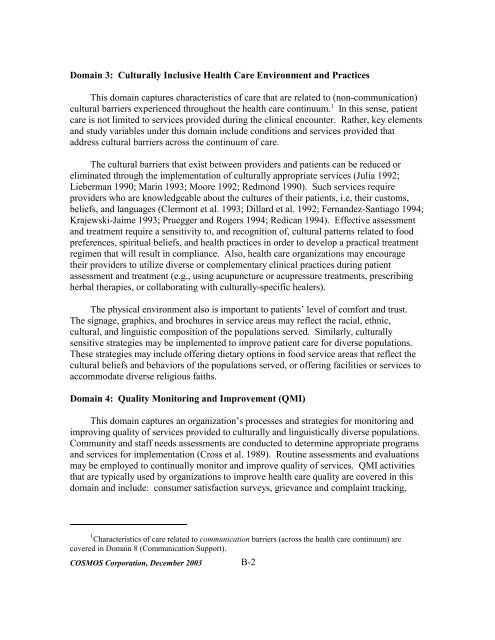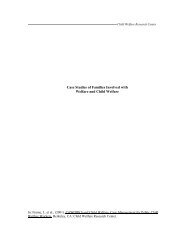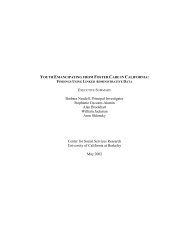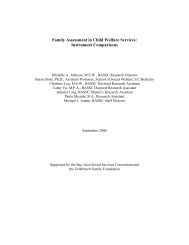Developing a Self-Assessment Toolfor Culturally - Office of Minority ...
Developing a Self-Assessment Toolfor Culturally - Office of Minority ...
Developing a Self-Assessment Toolfor Culturally - Office of Minority ...
Create successful ePaper yourself
Turn your PDF publications into a flip-book with our unique Google optimized e-Paper software.
Domain 3: <strong>Culturally</strong> Inclusive Health Care Environment and PracticesThis domain captures characteristics <strong>of</strong> care that are related to (non-communication)cultural barriers experienced throughout the health care continuum. 1 In this sense, patientcare is not limited to services provided during the clinical encounter. Rather, key elementsand study variables under this domain include conditions and services provided thataddress cultural barriers across the continuum <strong>of</strong> care.The cultural barriers that exist between providers and patients can be reduced oreliminated through the implementation <strong>of</strong> culturally appropriate services (Julia 1992;Lieberman 1990; Marin 1993; Moore 1992; Redmond 1990). Such services requireproviders who are knowledgeable about the cultures <strong>of</strong> their patients, i.e, their customs,beliefs, and languages (Clermont et al. 1993; Dillard et al. 1992; Fernandez-Santiago 1994;Krajewski-Jaime 1993; Pruegger and Rogers 1994; Redican 1994). Effective assessmentand treatment require a sensitivity to, and recognition <strong>of</strong>, cultural patterns related to foodpreferences, spiritual beliefs, and health practices in order to develop a practical treatmentregimen that will result in compliance. Also, health care organizations may encouragetheir providers to utilize diverse or complementary clinical practices during patientassessment and treatment (e.g., using acupuncture or acupressure treatments, prescribingherbal therapies, or collaborating with culturally-specific healers).The physical environment also is important to patients’ level <strong>of</strong> comfort and trust.The signage, graphics, and brochures in service areas may reflect the racial, ethnic,cultural, and linguistic composition <strong>of</strong> the populations served. Similarly, culturallysensitive strategies may be implemented to improve patient care for diverse populations.These strategies may include <strong>of</strong>fering dietary options in food service areas that reflect thecultural beliefs and behaviors <strong>of</strong> the populations served, or <strong>of</strong>fering facilities or services toaccommodate diverse religious faiths.Domain 4: Quality Monitoring and Improvement (QMI)This domain captures an organization’s processes and strategies for monitoring andimproving quality <strong>of</strong> services provided to culturally and linguistically diverse populations.Community and staff needs assessments are conducted to determine appropriate programsand services for implementation (Cross et al. 1989). Routine assessments and evaluationsmay be employed to continually monitor and improve quality <strong>of</strong> services. QMI activitiesthat are typically used by organizations to improve health care quality are covered in thisdomain and include: consumer satisfaction surveys, grievance and complaint tracking,1 Characteristics <strong>of</strong> care related to communication barriers (across the health care continuum) arecovered in Domain 8 (Communication Support).COSMOS Corporation, December 2003 B-2
















